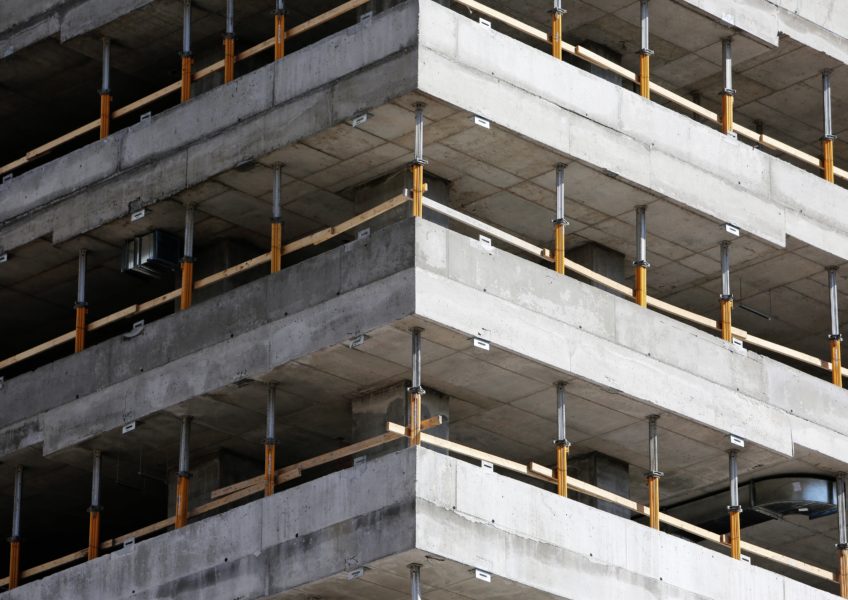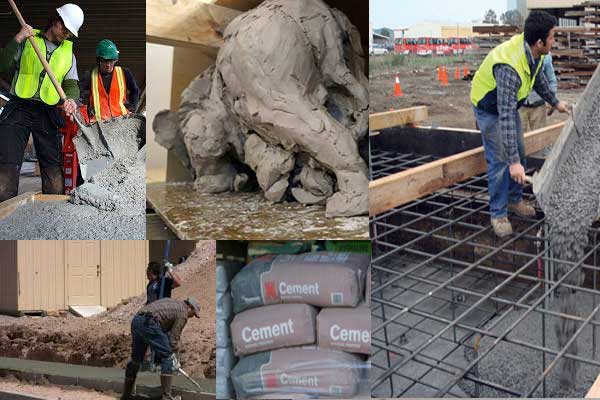The Necessary Duty of Concrete Foundation in Structural Integrity and Longevity
When it concerns developing a building, the foundation is more crucial than you may believe. Concrete structures supply unparalleled toughness and durability, guaranteeing your framework can withstand numerous ecological difficulties. Without a solid base, you risk possible concerns like changing or splitting, which can jeopardize security and value. Understanding the nuances of concrete structures can be the secret to protecting your investment for years to come. What should you think about next?
Understanding the Importance of Concrete Foundations
Concrete structures are essential to the general stability of any kind of framework, as they offer the important support required to endure various lots and environmental conditions. When you assume regarding building a home or a business space, the structure is the very first thing you must think about. It acts as an obstacle against dampness, securing your residential property from water damage. A well-placed concrete structure also protects against settling and moving, which can lead to fractures in walls and floors. You'll desire to ensure that the structure is appropriately designed and strengthened, as this influences the durability of your structure. Additionally, a strong structure can improve power efficiency by minimizing air leaks. Bear in mind, overlooking the relevance of a concrete foundation can cause costly repair services down the line. So, spending in a high quality structure upfront is essential for the integrity and resilience of your structure.
Benefits of Concrete Structures for Structural Honesty
While lots of elements add to a building's architectural stability, concrete foundations provide unparalleled sturdiness and toughness. You'll value that concrete can withstand severe weather conditions, withstanding both dampness and temperature variations. This durability implies your framework is much less most likely to experience fracturing or moving in time, which can jeopardize its safety.Additionally, concrete's intrinsic weight supplies a strong base, preventing movement during all-natural occasions like quakes or floodings. When you select a concrete structure, you're likewise choosing for reduced maintenance; unlike wood, it won't rot or attract insects, saving you money and time in repairs.Moreover, concrete's fire resistance provides added safety, guaranteeing your framework can withstand heats without significant damage. Overall, purchasing a concrete structure indicates you're prioritizing the long-term stability and honesty of your structure, making it a wise selection for any building project.
Typical Kinds Of Concrete Foundations
When it comes to building structures, comprehending the typical kinds of concrete structures can assist you make notified options for your task. The most common types include slab-on-grade, crawl space, and complete cellar foundations.A slab-on-grade foundation is an easy, affordable choice, where a thick concrete piece is put directly on the ground. This kind works well in cozy environments, as it decreases warm loss.Crawl area foundations elevate the home a little above ground, permitting for ventilation and accessibility to pipes and electrical systems. This design can assist avoid moisture issues.Full cellar foundations supply additional living or storage room while giving exceptional structural assistance. They need even more excavation and are normally used in colder climates to stop frost heave.
Variables to Take Into Consideration When Designing a Concrete Structure

Finest Practices for Putting Up Concrete Foundations
When you're setting up a concrete structure, proper website prep work is necessary to guarantee stability (West Coast General Engineering concrete foundation Rancho Cucamonga). You'll also need to comprehend support techniques to enhance stamina and durability. Don't overlook the curing process, as it plays an essential function in attaining a strong structure.
Site Preparation Significance
It might seem straightforward, correct website preparation is vital for assuring a strong and durable concrete structure. Begin by clearing the location of any debris, plant life, or organic material that can jeopardize the structure's integrity. Next off, analyze the soil kind and compaction; you could require to excavate or add materials to produce a steady base. Level the ground to ensure even weight circulation and stay clear of clearing up problems later. Mounting proper drainage systems is additionally necessary to avoid water build-up, which can compromise the structure over time. Finally, define the structure's measurements precisely to lead the pouring process. By following these actions, you'll establish the stage for an effective concrete foundation that stands the examination of time.
Reinforcement Strategies Discussed
As soon as the site is effectively prepared, the next action in assuring a sturdy concrete structure entails executing reliable reinforcement techniques. You must begin by using steel rebar, which supplies tensile toughness and helps avoid splitting. Lay the rebar in a grid pattern, making certain it's raised using spacers to preserve appropriate insurance coverage. Additionally, think about utilizing cord mesh for added assistance, especially in locations based on heavy loads. Don't fail to remember to connect the rebar junctions firmly with cord. For bigger foundations, fiber support can boost sturdiness, minimizing the threat of contraction splits. Constantly adhere to neighborhood building regulations and standards to make certain compliance. By applying these support techniques, you'll significantly increase your foundation's strength and longevity, laying a solid groundwork for your framework.
Healing Refine Fundamentals
To ensure your concrete foundation cures correctly, it's essential to maintain adequate moisture and temperature level problems promptly after pouring. Start by covering the surface with a damp cloth or plastic sheet to keep moisture. This maintains the concrete moisturized, stopping fractures and guaranteeing strength. You need to additionally check the temperature level; excellent healing problems are between 50 ° F and 90 ° F. If it's as well hot, haze the surface area consistently to avoid fast evaporation. For winter, think about using shielding blankets to keep warmth. Aim for a healing period of a minimum of 7 days, as this is vital for optimum stamina development. By complying with these best techniques, you'll enhance your structure's sturdiness and longevity, making certain structural honesty for years ahead.
Maintenance of Concrete Structures for Longevity
To keep your concrete structure solid and enduring, normal evaluations are essential. You must also ensure reliable drainage options are in location to stop water damage. If you identify any fractures, resolving them promptly will save you from larger problems down the line.

Normal Assessments and Evaluations
While regular inspections and analyses could appear like a task, they're important for maintaining the honesty of your concrete structure. By regularly checking for splits, shifts, or signs of wear, you can capture prospective issues Discover More prior to they intensify into pricey repair services. Search for any water merging around the foundation or uncommon settling, as these can indicate underlying problems. It's additionally smart to monitor any kind of modifications in your house's framework, like doors that stick or windows that do not open smoothly. Maintaining a record of your assessments helps track adjustments in time, permitting positive upkeep. Eventually, these assessments ensure your structure stays secure, supporting the long life and safety of your whole structure. Don't forget this vital facet of homeownership!
Efficient Water Drainage Solutions
Regular assessments can reveal problems like water drainage problems that may endanger your concrete foundation's security. To prevent water build-up, ensure your seamless gutters and downspouts direct water far from the structure. Installing French drains can efficiently reroute surface area and groundwater, decreasing stress on your structure wall surfaces. Additionally, grading the dirt around your home helps guarantee that water streams away, instead of merging near your foundation.Consider find this using sump pumps in areas susceptible to flooding, as they proactively get rid of excess water. Frequently look for obstructions in drainage systems and clear them quickly. You'll secure your structure's honesty and longevity by taking these proactive steps. Keep in mind, reliable water drainage remedies are important for keeping a strong, resilient concrete foundation.
Trigger Fracture Fixes
When you observe splits in your concrete structure, addressing them immediately is important for keeping its durability. Tiny splits can quickly progress right into bigger problems, jeopardizing the architectural honesty of your home. On a regular basis examine your foundation for signs of damages, such as straight or vertical fractures. If you detect any kind of, do not wait-- repair them right away. You can use epoxy shots or concrete patching compounds, which work for sealing splits. Always adhere to the supplier's directions and think about seeking advice from an expert for significant damages. Bear in mind, prompt fixings not only improve your foundation's durability but also conserve you money in the future by stopping much more substantial repair services down the line. Stay proactive, and your foundation will continue to be solid and safe.
Attending To Typical Problems With Concrete Foundations
Concrete structures can face numerous concerns in time, making it critical to determine and address them immediately. One of one of the most common issues is cracking, which can happen due to temperature level fluctuations or settling dirt. If you observe cracks, it's important to assess their size and depth; tiny cracks can commonly be secured, while larger ones might need specialist evaluation.Water intrusion is one more significant concern. Get the facts Excess dampness can result in mold and mildew development and structural degeneration. Warranty proper drain around your structure to mitigate this risk. Furthermore, seek signs of moving or bowing wall surfaces, as this can show underlying issues with your foundation's stability.Regular assessments are basic to capture these problems early. If you find any type of worrying indicators, do not hesitate to seek advice from a structure specialist. By remaining aggressive, you can maintain the integrity and longevity of your concrete foundation, assuring your home remains risk-free and protected.
Often Asked Concerns
Exactly How Does Dirt Kind Impact Concrete Structure Efficiency?
Dirt type considerably impacts concrete structure performance. If you have actually obtained large clay, for instance, it can cause shifting and breaking. Sandy soil may bring about resolving. Understanding your soil assists guarantee a stable foundation.
Can Concrete Foundations Be Fixed if Harmed?
Yes, you can fix damaged concrete foundations. Depending upon the degree of the damage, techniques like epoxy injection or piece jacking can recover security. It's finest to seek advice from an expert for effective solutions.
What Is the Typical Life-span of a Concrete Structure?
A concrete foundation generally lasts 30 to 100 years, depending on variables like dirt conditions, climate, and upkeep. You'll desire to maintain an eye on it to assure it continues to be in good shape throughout its lifespan.
Are There Alternative Products to Concrete for Foundations?
Yes, there are options to concrete for foundations, like steel, timber, or perhaps recycled materials. Each option has one-of-a-kind advantages and disadvantages, so you should consider your task's particular needs when picking the ideal product.
Just How Does Climate Impact Concrete Structure Longevity?
Environment substantially affects concrete structure toughness (West Coast General Engineering concrete foundation). Severe temperatures, dampness, and freeze-thaw cycles can weaken the product, leading to fractures and structural concerns. You must consider neighborhood climate conditions when intending your foundation to assure long-lasting performance